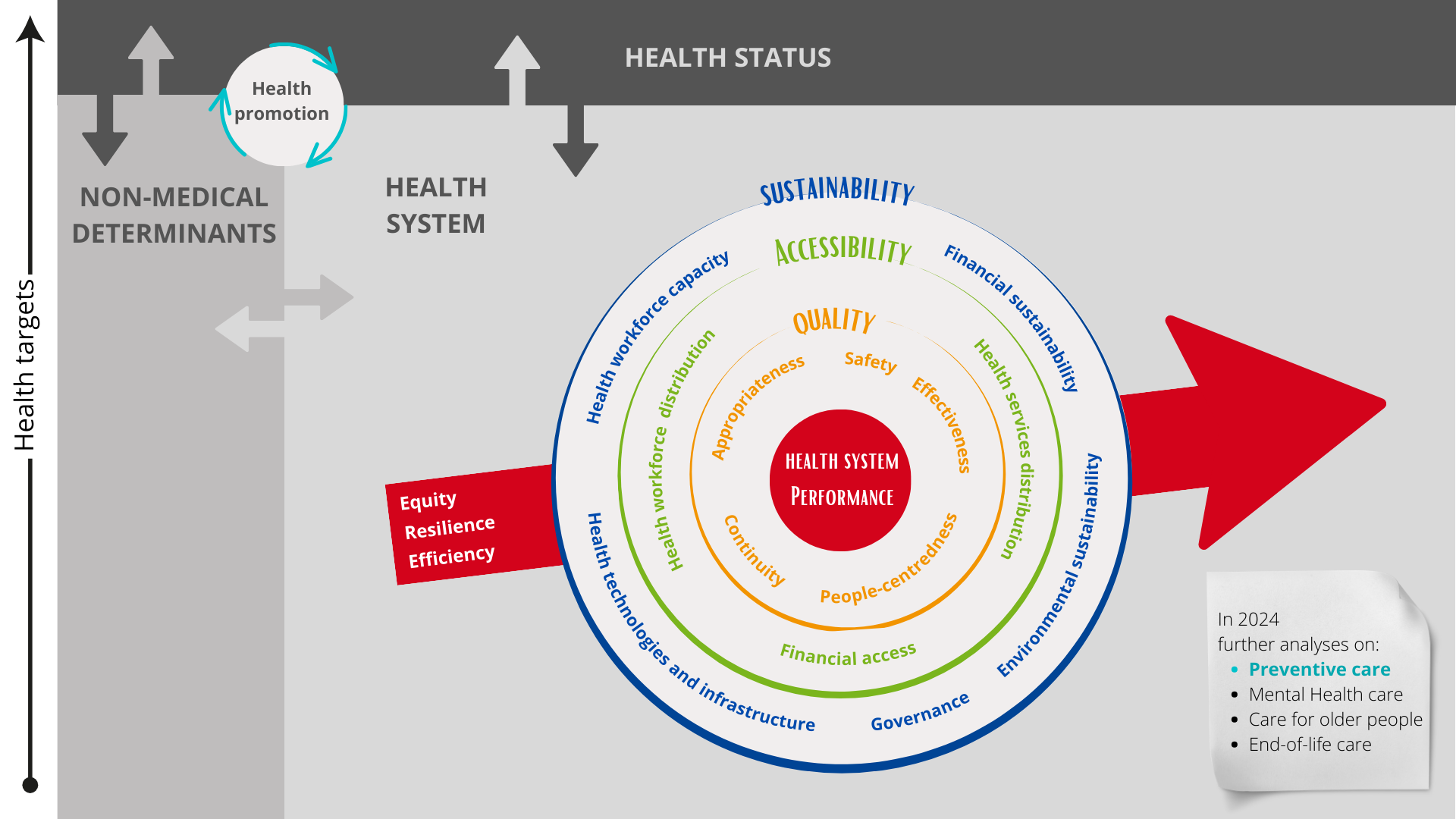All European countries within the World Health Organization (WHO) have agreed to perform regular “check-ups” of their healthcare system, known as “Health System Performance Assessments” (HSPA).
Such check-ups are based on a series of measurable indicators which, together, offer a comprehensive, transparent and accountable overview of the performance of the health system and makes it possible to monitor changes over time. This makes the HSPA process a valuable tool to help health authorities plan their health and care strategy, e.g. by setting measurable health goals to be met by a given deadline.
The Belgian HSPA approach is part of a conceptual framework that includes three interconnected levels:
- The health status of the population, which provides an overview of the health of the Belgian population through key indicators (e.g. life expectancy, quality of life, prevalence of certain diseases…).
- The non-medical determinants of health, which encompass the many factors that affect health and the use of healthcare services (when and how). These include e.g. lifestyle behaviours (smoking, physical activity, etc.), health literacy, and environmental factors.
- The actual performance of the healthcare system, which is assessed along six dimensions – quality, accessibility, and sustainability of the health system, which are further divided in subdimensions, and the cross-cutting dimensions of equity, resilience and efficiency – and a number of specific domains of care (prevention, mental health care, care for the elderly and end-of-life care in the latest HSPA report). Together, these (sub)dimensions and domains make up a framework, an organised structure containing all the indicators of the HSPA report. This framework is illustrated in the figure below.
As health promotion is a topic that extends well beyond the limits of the health system, we have chosen not to address it on this site rather than providing an inevitably incomplete view.

Depending on your areas of interest, you can explore the indicators of the HSPA report by their dimension (e.g. all indicators related to the accessibility of care) or domain of care (e.g. all end-of-life care indicators). A pictogram has been attributed to each indicator, to indicate whether results for that indicator are good, average or poor and how they have been evolving over time.
 |
Good results and improving |
 |
Good results, trend not evaluated |
 |
Good results and globally stable |
 |
Good results but deteriorating |
 |
Average results but improving |
 |
Average results, trend not evaluated |
 |
Average results and globally stable |
 |
Average results but deteriorating |
 |
Poor results but improving (warning signals) |
 |
Poor results, trend not evaluated (warning signals) |
 |
Poor results and globally stable (warning signals) |
 |
Porr results and deteriorating (warning signals) |
|
C |
Contextual indicator: no trend (no evaluation is given) |
|
|
Contextual indicator: upwards trend (no evaluation is given) |
|
|
Contextual indicator: stable trend (no evaluation is given) |
|
|
Contextual indicator: downwards trend (no evaluation is given) |
The 2024 HSPA evaluation, including 142 indicators, is also available as a scientific report on the KCE website.

